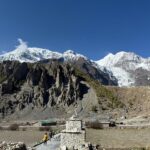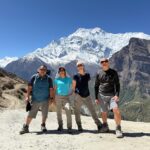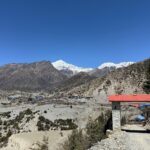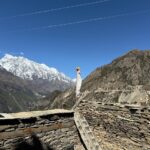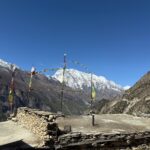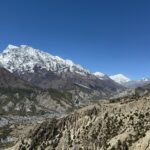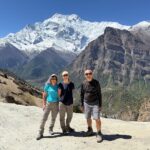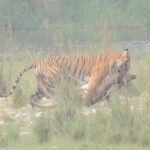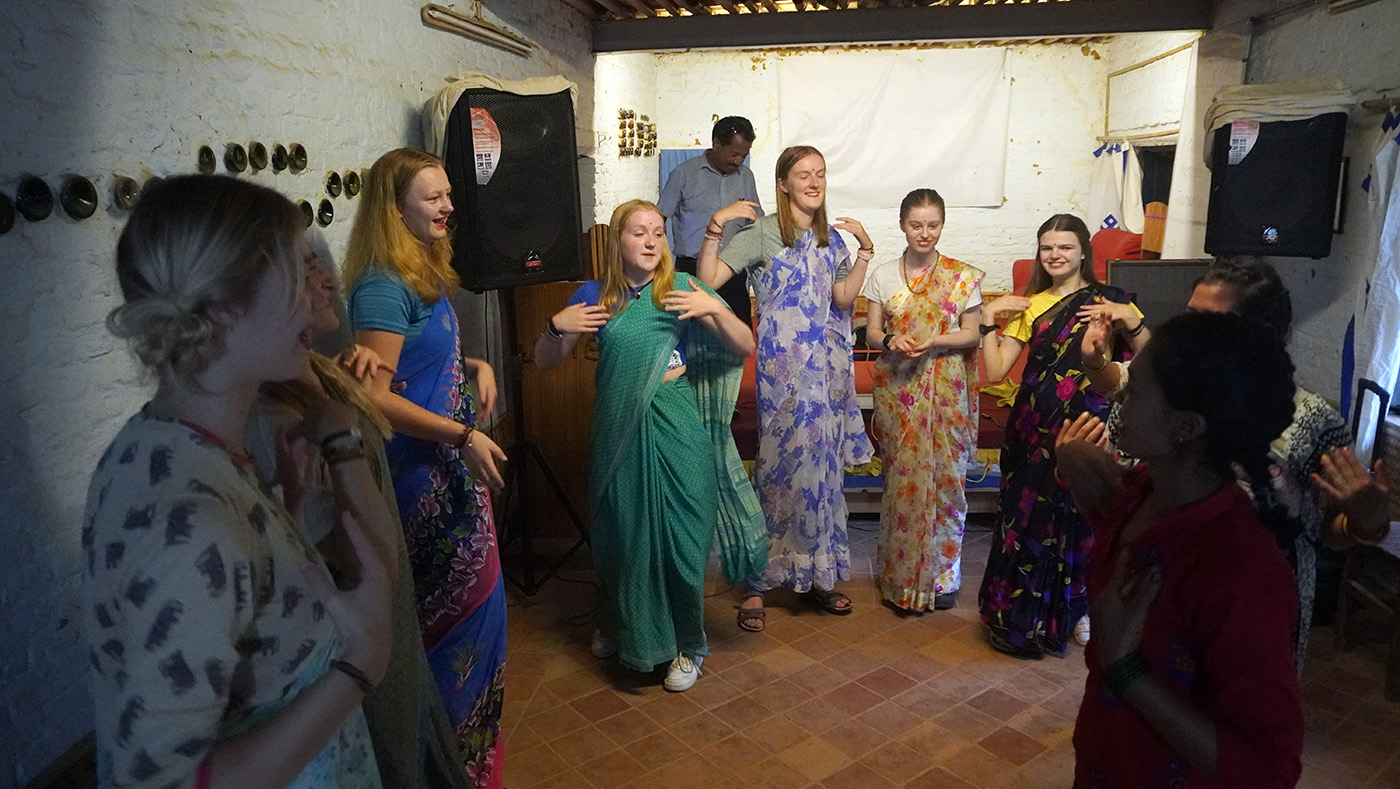
Nepal for School Trip
Nepal School Trip is an unforgettable school expedition filled with adventure, culture, and learning. Nepal for a school trip is an amazing destination. Nepal provides a diverse range of experiences for a school trip, encompassing adventure, cultural immersion, and educational prospects. Located in the majestic Himalayas, Nepal is famous for its breathtaking natural beauty, rich biodiversity, and vibrant cultural traditions.
A Nepal school trip transforms the typical vacation package, offering students a life-changing and diverse experience that integrates education, cultural immersion, and personal development. Unlike conventional vacations, a school trip to Nepal is meticulously planned to provide students with valuable learning opportunities and profound experiences.
From an educational perspective, the Nepal school trip includes visits to historically and culturally significant sites in Kathmandu. Students explore ancient temples, stupas, and palaces recognized as UNESCO World Heritage Sites. Guided tours deepen their understanding of Nepalese history, architecture, and religious practices, stimulating intellectual curiosity and fostering a deeper appreciation for the past.
Cultural immersion is prioritized, allowing students to directly engage with local communities. This involves staying with host families, participating in cultural exchanges, and engaging in hands-on activities like traditional craft workshops or language lessons. These interactions promote cross-cultural understanding, empathy, and appreciation for diversity, enriching students’ global perspectives and interpersonal skills.
Moreover, participating in thrilling activities such as trekking in the Himalayas, wildlife exploration in national parks like Chitwan, or white-water rafting in the rivers provides exciting physical challenges and insights into environmental conservation and sustainability. These experiences cultivate teamwork, perseverance, and a commitment to environmental stewardship among students.
In essence, a Nepal school trip aims to deliver a meaningful and enriching experience that blends education, cultural immersion, and outdoor exploration. It empowers students to expand their knowledge, develop cultural awareness, and acquire essential skills, creating a transformative experience that exceeds the scope of a typical vacation package.
Is Nepal the right destination for a school trip?
Nepal makes a perfect choice for a school trip, providing a mix of thrilling experiences, cultural immersion, and valuable educational opportunities. The country’s diverse landscapes, from the breathtaking Himalayan peaks to the vibrant Terai jungles, offer an incredible setting for outdoor adventures such as trekking, white-water rafting, and wildlife safaris. These activities encourage students to engage in physical fitness, work together as a team, and develop an understanding of environmental conservation by exploring natural wonders.
Nepal’s rich cultural heritage and deep-rooted traditions make it an ideal destination for cultural exploration. In Kathmandu, students can immerse themselves in the city’s religious and architectural heritage by visiting ancient temples, stupas, and palaces. Discovering UNESCO World Heritage Sites like Swayambhunath and Pashupatinath provides deeper insights into diverse cultures and the rich tapestry of global history. Homestays and cultural workshops offer students a firsthand experience of Nepalese daily life, promoting cross-cultural understanding and a sense of global citizenship.
Educationally, Nepal offers a wide range of opportunities across various subjects. Science students can explore diverse ecosystems and observe fascinating wildlife in national parks, while geography students can witness and analyze geological phenomena. History and social studies students can delve into the world of ancient civilizations and regional politics. Exploring local schools and community projects provides valuable insights into education and social initiatives, fostering a thoughtful approach to global issues.
What are the major attractions in Nepal for school trip?
Nepal offers a wide range of captivating destinations for school trips, combining natural splendor, rich cultural heritage, and valuable educational opportunities. In Kathmandu, students can discover Nepal’s fascinating history and culture by visiting iconic landmarks such as Swayambhunath (Monkey Temple), Pashupatinath Temple, and the medieval cities of Patan and Bhaktapur. These sites provide a glimpse into Nepal’s religious and architectural heritage, making it a truly enriching experience.
Adventure enthusiasts can explore the Annapurna and Everest regions, embarking on thrilling treks that offer awe-inspiring views of the majestic Himalayas. These treks promote physical fitness and foster a sense of environmental awareness. In the subtropical lowlands, Chitwan National Park offers exciting jungle safaris, allowing students to observe rare and endangered wildlife, including the Bengal tiger and one-horned rhinoceros.
Cultural immersion activities, such as staying with local families and participating in traditional craft workshops, give students firsthand experience of Nepalese daily life, promoting a greater understanding of global perspectives. Visiting local schools and community projects provides valuable educational experiences and encourages thoughtful reflection on important global matters. Additionally, outdoor activities like white-water rafting and paragliding in Pokhara add to the trip’s excitement.
What a student can expect from a school trip in Nepal?
When embarking on a school trip to Nepal, students can anticipate an immersive and diverse experience that blends thrilling adventures, cultural exploration, and valuable educational opportunities. Begin your journey in Kathmandu, where you can explore captivating landmarks such as Swayambhunath (Monkey Temple), Pashupatinath Temple, and the ancient cities of Patan and Bhaktapur. These visits offer a deep understanding of Nepal’s religious, architectural, and cultural heritage, establishing a tangible link to history and tradition.
Exploring Nepal’s natural wonders is a pivotal part of the journey. Students can embark on unforgettable treks through the awe-inspiring landscapes of the Annapurna and Everest regions, where they’ll enjoy breathtaking views of the majestic Himalayas. These treks not only promote physical fitness but also nurture a greater appreciation for the environment and the wonders of nature. In Chitwan National Park, students can participate in thrilling jungle safaris, offering opportunities to encounter rare and endangered wildlife such as the Bengal tiger and the iconic one-horned rhinoceros.
Another highlight is the chance to fully immerse themselves in local culture. Staying with families and engaging in traditional craft workshops provides students with an authentic experience of Nepalese daily life, promoting cross-cultural understanding and cultivating a global perspective. Visiting local schools and community projects in Nepal offers valuable insights into the country’s education system and social initiatives, encouraging students to reflect on global issues and their implications.
Incorporating outdoor activities like white-water rafting and paragliding in Pokhara adds an element of excitement and adventure to the trip, making it both educational and exhilarating. Overall, students can expect a transformative journey that broadens their horizons and deepens their understanding of the world.
How safe is Nepal for School Trips?
Nepal is a secure destination for school trips, providing a diverse range of experiences that encompass cultural immersion and thrilling outdoor activities. The country has made remarkable progress in enhancing tourism infrastructure and implementing safety measures in recent years, especially in well-known destinations such as Kathmandu, Pokhara, and the trekking routes in the Himalayas. However, there are several important factors to keep in mind to ensure a secure and pleasant journey.
Firstly, it is worth noting that political stability has indeed improved, although there may still be occasional political demonstrations and strikes, especially in urban areas. It’s important for schools to stay up-to-date with local developments and remain adaptable in their schedules.
Additionally, Nepal is susceptible to various natural hazards including earthquakes, landslides, and floods. It is important for schools to be prepared for emergencies, such as having evacuation procedures in place and easy access to emergency services.
It is crucial to prioritize health precautions, especially considering the limited availability of medical facilities in remote areas. It is important for students to ensure they have adequate travel insurance that includes coverage for medical evacuation. Additionally, it is crucial for them to be aware of the risks of altitude-related illnesses when embarking on treks in high-altitude regions.
Lastly, it’s important to note that there may be instances of petty crime, such as pickpocketing, in tourist areas. However, by using common sense and taking precautions to keep your valuables secure, you can reduce the risks associated with such incidents. Overall, Nepal provides a conducive environment for educational experiences that promote cultural understanding and personal growth among students, when proper planning, supervision, and adherence to safety guidelines are in place.
How to Prepare for a School Trip to Nepal?
Planning a school trip to Nepal demands meticulous attention to detail and thoughtful consideration of various factors to ensure a secure, educational, and enriching experience for students. Here’s a comprehensive guide:
First, Conduct Research and Plan: Start by thoroughly researching Nepal’s attractions and carefully selecting suitable regions and activities for students. Optimal times to visit are typically autumn (September to November) and spring (March to May) for favorable weather. Craft a balanced itinerary that includes educational visits to Kathmandu’s UNESCO World Heritage Sites alongside exciting activities like Himalayan trekking and wildlife safaris.
Second, Health and Safety Measures: Prioritize student well-being by addressing health concerns proactively. Seek advice from healthcare professionals regarding essential vaccinations such as hepatitis A, typhoid, and tetanus. Consider altitude-related medications if visiting higher elevations. Ensure comprehensive travel insurance covers medical emergencies and evacuations. Educate students on local health risks, including diseases, and provide safety tips like hydration and insect repellent use.
Third, Arrange Logistics: Secure accommodations near educational sites and plan transportation logistics, including airport transfers and ground transport for excursions. Develop a detailed itinerary with structured activities, free time, and contingency plans. Confirm reservations well in advance to prevent last-minute issues.
Fourth, Integrate with Education: Integrate the trip into classroom learning by exploring Nepal’s history, culture, geography, and environmental issues beforehand. Assign relevant reading materials and encourage students to prepare questions for guided tours and cultural interactions to enhance learning.
Fifth, Promote Cultural Sensitivity: Educate students on Nepalese customs, etiquette, and religious practices to ensure respectful behavior. Learn basic Nepali phrases to facilitate communication and emphasize cultural awareness.
Sixth, Pack Essentials: Create a comprehensive packing list including appropriate clothing, personal hygiene items, medications, reusable water bottles, and specific gear for activities like trekking.
Seventh, Financial Readiness: Inform students about the Nepalese Rupee and budgeting for personal expenses such as souvenirs and meals. Recommend carrying a mix of cash and cards suitable for international transactions.
Lastly, Communicate and Prepare Documentation: Establish clear communication among students, teachers, and parents/guardians. Provide emergency contact details and ensure participants have valid passports, sufficient validity, and necessary visas. Collect signed permission forms, including medical releases and emergency contacts.
Through thorough planning and preparation, educators can create a Nepal school trip that is both educational and culturally immersive, ensuring a safe and memorable experience while fostering personal growth and global awareness among students.

